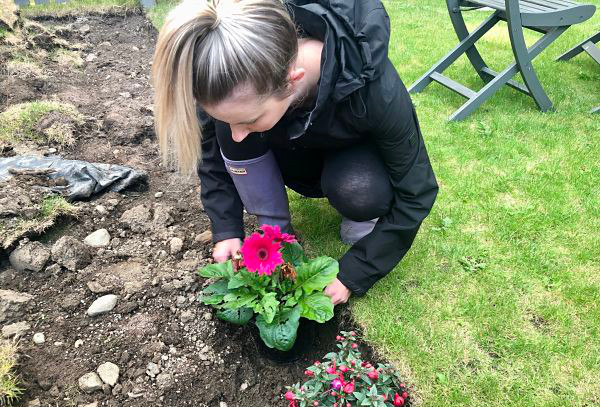You may have heard the phrase ‘side hustle’ quite a lot recently, but what actually is a side hustle, and how could it help you decide if you want to become an entrepreneur and set up your own business?

It’s a bit of a myth that you need to ditch your job and straightaway throw yourself full-time into starting your own business. Many of us are studying, already have part or full-time jobs or caring commitments, and don’t want to, or simply can’t, ditch these responsibilities overnight.
But that doesn’t mean that you can’t dip a toe in the water and see if you would like to run your own business! You may have your ‘9-5’ job, but you can also do a ‘5-9’ job in a few hours a week.
And that’s really what a side hustle is…setting up your own small business on the side around your core commitments (studying, employed work, childcare). It’s a great low-risk way to test out a business idea you may have, and you can start anywhere, at any time…you just need to start! Start small…but dream big…
It’s all about taking action and giving it a go, at low risk and low cost. If it doesn’t work out, it’s not a problem and you can try out another idea. It’s also a good way to overcome any fear of failure you may have and help you build confidence and resilience – two key skills you will need to build any business (and any career). And finally, it also allows you to be creative, try out new skills and meet new people, all of which may actually benefit your main career as well.
Recent research from Henley Business School shows that 25% of people now have a side hustle (rising to 37% in the age group of 25-34) and that their side hustle makes up about 20% of their total income. What could you do with an extra couple of thousand pounds per year?
Worth noting that the key difference between an additional part time job to earn more income and a side hustle is that with a part-time job, you work for someone else and they set the rules. With a side hustle, you work for yourself and YOU set the rules – which could be a very nice feeling, couldn’t it?
Sounds great, you might well be saying, but I don’t have an idea, time nor money (or all three!). That may be true in some cases, but mostly, these are problems that can be easily overcome.
How can I come up with an idea?
Everyone has an idea within them, although at the start it may not seem that way to you.
Have a think about some problems you have come across and said “Oh I wish I could do this or have that…”). Think about activities you are interested in – have a look around your house – what books are you interested in, what hobbies do you have, what TV programmes do you watch? Look at sites like TrendHunter, Pinterest and crowdfunding platforms such as Crowdfunder to see what new ideas are trending on a global basis (your business idea doesn’t need to be totally innovative.) What services could you offer online – coaching, mentoring, gardening, cooking? You’ll soon have a list of some great ideas and you can whittle them down to something that really inspires you and focus on developing that.
Have a look at our article on Creating a Business Idea here.
I don’t have the time
This really is a bit of an excuse! Everyone can find five hours a week – stop watching Netflix a couple of times a week or give up a favourite TV programme for a while. Put a value on your time – tell yourself that your personal time is worth say £50 an hour – how wisely do you want to spend your valuable personal time…watching TV or thinking about setting up your own business? See your side hustle as ‘me-time’, it really is time for you.
Work out the time you can dedicate to your side hustle every week and stick to it – having a dedicated schedule really helps.
I don’t have any money
Our key advice for setting up a side hustle is to do it at very low cost…and absolutely not to take on any debt whatsoever. This keeps it low risk and doesn’t introduce any financial worries for you.
Think about what money you would need to start up. For example, you may need £500 to start selling the jam or flavoured oils or fragranced bath bombs you make that everyone raves about. How could you generate this extra cash to start up and buy enough stock?
Could you ditch some of your subscriptions or daily coffees for a few months, limit your nights out for a few weeks? Could you have a clear out and sell a whole load of things you don’t need on eBay and get the money you need? Many people could clear their wardrobes, garages and lofts and release quite a few hundred pounds (and have a tidier home into the bargain!).
There is also crowdfunding where you can raise some money from a community of supporters to help start your business – in return you give them some “rewards” when your product or service is ready. There’s more about the experience of crowdfunding here.
So, now you might have the idea, the time and some money to get started. What next?
Research
Do some research before you go much further. Ask ten of your friends about your idea to see what they think (although be careful with friend’s opinions – they may tell you what you want to hear, not what you need to hear, so ask them to be honest and don’t be offended!).
You can also mock ideas up and test them out on a closed Facebook page or with Facebook ads.
Go into shops and ask customers what they think (get permission first though). Try out a stall at a small craft event or farmers market.
And remember, when it comes to innovative products and services, there are very few radical innovations, merely adaptations of existing products. So, don’t get worried that your product may be the same as someone else’s (obviously, don’t copy or steal other people’s ideas!) – you can differentiate by doing it quicker, better, cheaper, better service, better delivery, etc.
Business Plan
You might need a bit of a business plan as well. Don’t worry too much about this at this stage, you are really just needing a few pages of information that pulls together some of your key thoughts in a few areas, and which gives you some clarity and a direction of travel with what you are doing in your side hustle.
There are lots of good templates available. Have a look at Business Gateway, learn about creating a Business Model Canvas here and have a look at this 6 M’s Model (Matter, Markets, Model, Margins, Management and Money) here. See a business plan at this stage simply as a tool to help you with your thinking.
Costs and Income
Keep your side hustle very low cost and to reiterate, do not take on any debt. Allocate a small budget of risk money and stick to it, with no excuses. This is important for helping to understand cashflow and budgeting. Don’t buy more supplies than you need – buy little and often. Items might be a little more expensive to buy this way, but better that than having a room full of stuff you don’t need and can’t sell.
And you don’t need to set up a separate company or have a separate bank account to start your side hustle (that can come later). You can work legally very well as a ‘sole trader’ at the start. But it might be worthwhile thinking about setting up a separate PayPal account so that you can keep a (satisfying!) record of your side hustle income.
Helpful Tools
It’s never been easier to set up a low-cost business – there are lots of really good free and low-cost tools out there. Think about using tools like WordPress, Shopify, Amazon, eBay, Facebook, Twitter, Instagram, Etsy and Canva. Have a look at YouTube, Udemy and LinkedIn Learning for tutorials on how to use these tools.
And you can also get freelancers by the hours to help you on sites like People per Hour and Fiverr. Just keep your costs down and do what you can yourself when you can – it’s great fun learning new skills!
And when your side hustle takes off, there is lots of help available to you if you want to take it to the next step through your local Business Gateway here.
To sum up, a ‘side hustle’ is a great option for working women, mums and students. Women are already great multi-taskers, with a little bit of focused effort you can fit this in!
Find something you are interested in, look up and around you for inspiration and do some initial research. Use all the free tools that are available to you, allocate a consistent amount of time that you can manage every week, give yourself a small risk budget and keep everything small and at a slow and steady pace at the start. Your side hustle may grow into a business in time, but that’s not what you are after right now – you are simply testing the waters to see what is in the art of the possible, and to find out if you like being your own boss!
One note of caution. If you do work in paid employment or are studying, you may need to check with your employer/educational provider first that you can start up a side hustle, especially it if is related in any way to your work or studies. And don’t ever do any work on your side hustle during your work on study time. Paid work comes first – you must do your core job well and consistently – and there may be Intellectual Property issues to be aware of too. Check first!
Anyone can do this with a bit of focus. And if it doesn’t work first time, don’t worry, it probably won’t work perfectly first time round. You haven’t really lost anything (including your reputation!), but you will have learned a lot, acquired new skills and you can try again with another idea.
Here are some more helpful tips on making the leap to start

